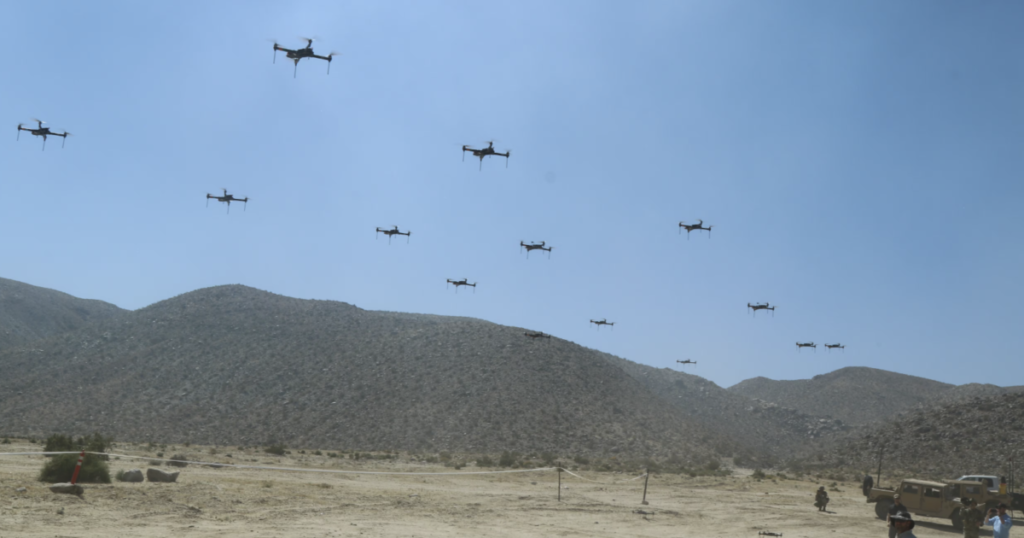The emergence of drone incursions against U.S. military facilities has become a pressing concern, with notable incidents recorded over the past year. The trend began in December 2023, when drone swarms persisted for 17 days uninterrupted over the Hampton Roads/Virginia Beach region, a significant cluster of military installations. Following this, drone activity was reported at Picatinny Arsenal in New Jersey starting November 18, 2024, which is a critical Department of Defense center for small arms and ammunition. The situation escalated further, as drone swarms began affecting three major U.S. Air Force facilities in Europe, namely the Royal Air Force Bases at Lakenheath, Mildenhall, and Feltwell. These recent events paint a worrying picture of vulnerability, as they reveal a trend that necessitates immediate attention and an effective response from U.S. defense authorities.
Despite the scale and persistence of these drone incursions, the response from governmental and military officials has been notably muted, often relegated to forceful press releases rather than tangible action. The sophisticated nature of these drone incidents points to potential involvement from hostile foreign powers, rather than mere coincidences or amateur drone enthusiasts. As multiple observers have questioned on social media, the inaction raises alarm regarding the adequacy of defenses in place and leads to speculations regarding the orchestrators behind these drone activities. Retired CIA Operations Officer Mike Baker humorously suggested that the CIA would utilize interns for creative drone neutralization methods, further emphasizing the apparent absurdity of the current lack of effective countermeasures.
The source of these drone swarms, particularly those affecting bases in the UK, raises additional questions about their origin. Speculations indicate that Chinese vessels may be involved in the orchestrated actions, utilizing the Baltic Sea as a staging ground for these incursions, while the U.S. Navy remains mostly occupied in the Middle East. This situation reflects a broader context of fifth-generation warfare, where China is purportedly retaliating against U.S. and NATO support for Ukraine. The proximity of these vessels to strategic military locations, combined with incidents involving disruptions to undersea infrastructure, paints a disturbing picture of potential foreign aggression under the guise of maritime trade routes.
Responding to these incursions poses challenges that are markedly different from those faced in active combat zones. The frequency of such flights over residential areas complicates the decision-making process, as aggressive responses could endanger civilian populations. There is a strong need for a sophisticated counter-drone strategy that considers the unique dynamics of the domestic environment as opposed to overseas combat scenarios. Current discussions suggest the need for a layered defense approach, analogous to Israel’s Iron Dome system, which combines surveillance, notification, and neutralization measures against potential drone threats. Such a comprehensive strategy would require innovation and a multi-faceted approach to ensure effective protection of vulnerable installations.
A critical aspect of establishing a viable counter-drone strategy lies in the development of effective surveillance mechanisms. Given the crowded domestic radio frequency environment, the implementation of any new RF capability would face significant regulatory hurdles and delays. Alternative passive surveillance techniques, such as AI-enabled electro-optic systems, are proposed as viable options for monitoring and detecting drone activity. Moreover, establishing a robust notification system that enables timely communication between federal, state, and local authorities will be critical for coordinated responses during such incursions. Learning from the Israeli model, incorporating traditional alert systems such as air raid sirens could facilitate public awareness and safety during drone attacks.
The lack of a clear protocol regarding responsibility for drone incursions within U.S. governmental structures has hindered efforts to effectively address this pressing security issue. The ongoing inter-agency disputes over roles, responsibilities, and resources dedicated to domestic drone defense have resulted in stagnation and inefficacy. As the landscape of aerial mobility evolves, the need for coherent policy and response plans related to counter-drone efforts becomes increasingly urgent. The National Aeronautics and Space Administration (NASA) has emerged as a pivotal entity in this discussion, and the potential collaboration of innovative leaders like Elon Musk and Vivek Ramaswamy could significantly accelerate the development of a refined and efficient approach to addressing domestic drone threats. As this issue continues to escalate, swift and decisive action will be essential to safeguard U.S. military facilities and, by extension, national security.

